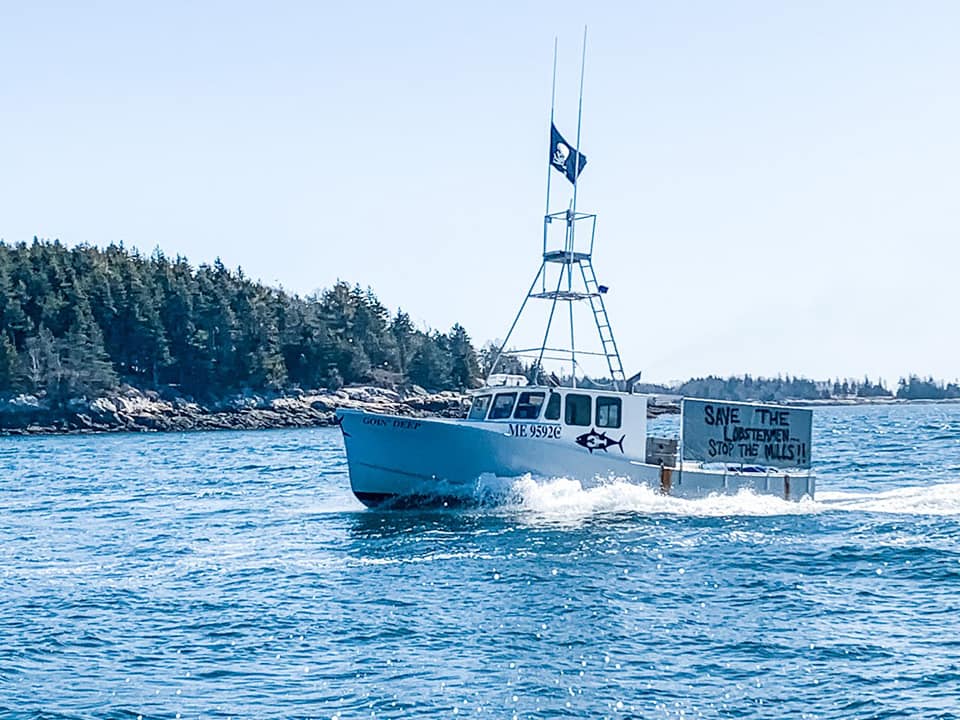From afar it looked like a flag-waving boat parade, but an offshore procession Sunday of fishing vessels off the mid-Maine coast was a protest against plans for an undersea power cable and offshore wind turbine.
Organized by captains on short notice, the demonstration involved more than 80 boats trailing the route of a proposed export cable from a floating turbine site south of Monhegan Island to South Boothbay.
The 12-megawatt project by New England Aqua Ventus and the University of Maine would be a demonstration project for the feasibility of floating turbine technology – which would be necessary for developing wind power in the deepwater Gulf of Maine.
Fishing advocates contend the developers need to be more transparent in planning, but protesters said there are immediate issues with gear conflicts.
“The boat hasn’t been staying in the survey route, and there’s been some issues with gear loss,” Dustin Delano, a Friendship lobsterman and and organizer, told the Portland Press Herald.
Writing on the association’s website March 17, Delano said relations between fishermen and wind planners are handicapped by pandemic restrictions as well.
“Due to covid-19 restrictions, in-person meetings have been prohibited throughout the engagement process. As a result, many fishermen who live in rural areas without access to good broadband, and fishermen lacking the knowledge to use online platforms, are being excluded from both conversations and access to information,” Delano wrote. “They are completely in the dark about something that has the potential to destroy their future.”
A day after the demonstration, some protesting lobstermen were more confrontational, approaching the 150-foot survey vessel Go Liberty on Monday.
Lobsterman Larry Reed posted a video to Facebook complaining “He’s gonna tow right though that lobster gear with no concern.”
Maine state government obtained a $47 million Department of Energy grant for the project. Wind developers Diamond Offshore wind and RWE Renewables invested another $100 million in August 2020.
More alarming to the fishing advocates are the state’s plans for potentially a dozen turbines, in a farther location 20 to 40 miles offshore where state planners have outlined a 16-square mile area of interest.







